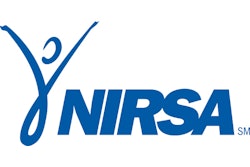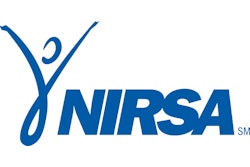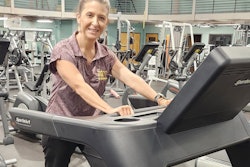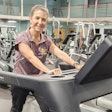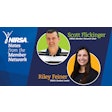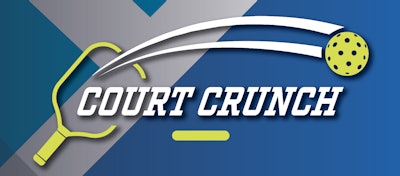
Can a sport become too popular?
Probably not, but the pickleball explosion has created a perfect storm of challenges for parks and recreation departments across the country.
What started as a niche sport for retirees has evolved into a nationwide phenomenon that’s forcing municipalities to completely rethink their outdoor court planning strategies in an effort to continue offering facilities for traditional tennis players, as well as for players of sports such as basketball and volleyball.
“When you couple some changes in the private sector inventory and the double-digit growth of tennis that was related to COVID, and then the explosion of pickleball, we found ourselves with a shortage,” says Ali Rhodes, director of Parks and Recreation for Boulder, Colo. “It was one of the topics that bubbled to the top in our community-wide look.”
Boulder’s experience mirrors what’s happening in communities nationwide. The city’s 2022 departmental plan revealed a striking reality: historically high demand for tennis courts combined with explosive pickleball growth during the pandemic created unprecedented demand that existing infrastructure simply couldn’t meet.

Strategic response
The solution isn’t as simple as converting existing tennis courts or building more facilities. Today’s most successful parks departments are taking systematic approaches that balance competing demands while maximizing long-term value for their communities.
Boulder’s response was a comprehensive Court System Plan that guides racket sport capital investments, operating decisions and partnership development. “Every time someone calls you and says, I want a tennis court or I want another dog park, you can’t just make those decisions in a silo,” Rhodes says. “We serve a community of 104,000 people, and we need to look at it systematically.”
In Medford, Ore., the strategic planning process yielded even more dramatic realities. Parks director Rich Rosenthal says that pickleball emerged as “the number one topic overall” during the city’s recent planning session, which involved a comprehensive community input process, including online surveys and public meetings.
The community response was so overwhelming that Medford committed to building what Rosenthal calls a “mega complex.” Scheduled to break ground this fall and targeted for completion in 2026, the venue will feature 19-courts dedicated to pickleball. The project required raising $1.8 million through both public and private funding sources.
Beyond the sheer number of courts needed, departments are grappling with fundamental infrastructure decisions that will impact maintenance costs and court longevity for decades to come.
“For years in our industry, the easier, cheaper way was to build courts on a slip sheet with asphalt underneath,” Rhodes explains. “Well, we have clay soils, we have expansive soils. That results in cracks across the courts and a whole lot of maintenance where you go in and patch and seal every three to five years, and six months later, you still might have cracks.”
Boulder’s solution represents a significant upfront investment with long-term payoffs. As the city rebuilds or constructs new courts, it’s completely tearing out old foundations and replacing them with post-tension concrete that can better handle expansive soils and freeze-thaw cycles.
“That piece is a huge part of our investment just on the existing courts,” Rhodes notes. “As we go in and refurbish them, we’re actually going down to the sub-surface and rebuilding them.”
This infrastructure-first approach is becoming increasingly common as departments realize that cutting corners on foundations leads to exponentially higher maintenance costs and user dissatisfaction over time.
The programming puzzle
Once courts are built, departments face complex decisions about programming, scheduling and access that can make or break community satisfaction. The challenge is particularly acute with pickleball, where noise concerns and user conflicts require careful management.
“There is a noise concern with pickleball and proximity to housing or other activities,” Rhodes says. Boulder addresses this by strategically locating pickleball courts at sites with appropriate distance from residential areas and designating most tennis courts exclusively for tennis use.
The scheduling approach varies significantly based on location and amenities. “The courts that are at locations with amenities such as shade and restrooms — those are booked a significant amount of the time, and people do have to make a reservation to access those courts,” Rhodes says. “We have what I call the ‘twosies’ throughout the community, where there are two tennis courts embedded in a park in the middle of a neighborhood. Bookings for those is only at 10%, and folks often will just show up first come, first served.”
However, formal scheduling systems can create their own stressors. In Medford, Rosenthal reports that third-party meetup apps have “caused problems” and “acrimony between user groups who want to play certain places at the same time.”
“People are confused because they think that these apps are somehow endorsed or sanctioned by the city as an official scheduling tool,” Rosenthal says. “We emphasize over and over again that that is not the case in Medford. It is first come, first served.”
Medford’s department lacks the personnel to manage formal court scheduling, preferring to maintain open access while encouraging proper court etiquette. Says Rosenthal, “We do not have enough staff or staff time available to get into the business of regulating pickleball scheduling.”
The indoor complement
Indoor courts can complement a municipality’s outdoor courts, but the scale of investment required for building an indoor facility might push departments toward innovative partnership models. Boulder’s approach to indoor facilities exemplifies one trend, while Medford sought community partnerships for additional resources.
“We’ve determined we’re not going to do it on our own. It doesn’t make sense for us,” Rhodes says of Boulder’s plan for an indoor facility, which the city is confident will supplement its outdoor offerings. “What’s really popular in some communities is to either put out an RFP and work with someone to design, build and operate a facility for you, or just to do a straight ground lease, and that’s what we’re evaluating right now.”
Rhodes says Boulder hopes to bring in a partner on that project.
“We’ve shared our intention to partner with the University of Colorado,” Rhodes says, noting that the facility will feature four to six indoor courts that will be available year-round. “They have a women’s tennis team, and their facility has gone away. They have some short-term solutions, but we’re trying to figure out a long-term solution that might benefit both the university and the community.”
Medford took a different but equally strategic approach with their Rogue Credit Union Community Complex. The facility houses eight basketball courts that can be reconfigured as 16 volleyball courts or up to 32 pickleball courts, creating maximum flexibility for year-round programming. It also includes an aquatics center, as well as an events center.
“We offer drop-in hours for pickleball, basketball and volleyball on a daily basis, based on availability,” Rosenthal says. “Most weekdays, there is availability for all three of those activities, and people pay a drop-in fee.”
This multipurpose approach proved particularly valuable for addressing Medford’s indoor pickleball demand during colder months. “People are playing outdoors for the most part in the warm-weather months, but they come indoors during the offseason,” Rosenthal says, adding that flexible court configurations allow the department to respond to seasonal demand shifts without building sport-specific facilities.
The partnership model allows departments to provide indoor facilities without taking on the full financial burden of a facility build. It also leverages existing institutional expertise while ensuring public access, whether through university partnerships like Boulder’s or community partnerships like Medford’s credit union naming rights agreement.
Assistance with a catch
Parks officials are also attempting to meet the court crunch by soliciting facilities grants from organizations such as the United States Tennis Association and USA Pickleball, but there can sometimes be strings attached to such funding.
Officials in Hamden, Conn., recently thought they had found the perfect solution to their aging tennis court crisis. The town’s eight asphalt courts, believed to be 20 to 30 years old, had developed deep cracks and slippery surfaces that led them to be closed down in April 2024, displacing high school athletes and cutting off community access.
The town’s $850,000 renovation plan seemed straightforward: resurface all courts and add pickleball lines to four of them to meet growing demand for both sports. Then officials discovered a catch that’s becoming increasingly common across the country — courts with permanent pickleball lines don’t qualify for USTA funding.
“So far, as part of the [USTA grant] requirements, they can only be striped for tennis,” town engineer Stephen White told the New Haven Register. The USTA requires a five-year waiting period before permanent lines for sports other than tennis can be added to courts that receive its funding. The restriction puts cash-strapped departments in an impossible position, as White acknowledged, noting the town is “attempting to balance the tennis and pickleball courts to get the most money and still provide play space for both.”
The irony isn’t lost on parks professionals.
Rhodes, for one, lauds the USTA’s increased support. “What is super cool to see is the way both USTA and USA Pickleball understand the challenges cities are faced with and are doing their best to try and offer support,” Rhodes says. “USTA has significantly increased the amount they have available for facility grants.”
But the organization’s resistance to dual-lined courts creates a strategic dilemma that may actually drive departments away from shared-use solutions. As Rhodes explains Boulder’s experience: “We currently have zero dedicated pickleball courts. We’ve done the thing where we’ve added striping to existing tennis courts, but given the demand for tennis, that’s just resulted in even more unhappiness for tennis players.”
The funding restrictions may inadvertently push departments toward the more expensive solution, and the one USTA prefers — separate, dedicated facilities for each sport. For departments already struggling with budget constraints, losing hundreds of thousands in potential grant funding can be the difference between a project moving forward or getting shelved indefinitely.
The bottom line
The court planning challenge facing parks departments today requires balancing immediate community demands with long-term strategic thinking. The most successful approaches combine comprehensive community input, thorough planning, innovative partnerships and infrastructure investments designed for longevity rather than lowest initial cost.
Whether through Boulder’s systematic Court System Plan, Medford’s community-driven mega-facility, or emerging technology solutions, the key is moving beyond reactive decision-making toward proactive strategies that can accommodate multiple sports, diverse user groups and evolving community needs for years to come.
The pickleball boom may have created the crisis, but it’s also forcing parks departments to develop more sophisticated approaches to recreational facility planning that will serve their communities well into the future. As Rhodes puts it, “You have to look at the big picture systematically.”
Technological eye on the ballers
While established departments untangle traditional scheduling challenges, new technology solutions are emerging that could revolutionize court management, as well as how municipalities create their roadmaps for new courts. Anthony Edwards, founder and CEO of GoodRunss AI, represents a new generation of entrepreneurs addressing these challenges.
“I noticed that there was a big gap in how people find the gyms where they go to play pickleball,” Edwards says. “People would just show up to random pickleball places or random basketball courts at what they assume would be a peak time to try to get the best game.”
GoodRunss AI started as a simple app allowing users to check into facilities and report activity levels through crowd-sourced data, similar to how Google Maps crowd-sources traffic conditions. But Edwards discovered a bigger opportunity when he skimmed the chaotic scheduling systems used by facility managers.
“I caught a glimpse of an athletic director’s schedule one day, and I just noticed her schedule was extremely messy and extremely cluttered,” Edwards recalls. “She gets 30 emails from the scheduling system a day. She gets emails from students requesting to schedule facilities. There’s so much clutter.”
GoodRunss AI has since evolved to offer predictive analytics, automated scheduling and crowd-sourced activity reporting. The app’s traffic prediction feature uses AI to learn peak facility hours over time, incorporating variables such as weather and local events to make highly accurate predictions about facility usage.
For parks departments, Edwards sees two primary value propositions: safety and data. The safety component addresses a growing concern for parents dropping children off at public facilities. “Parents are dropping off their kids at parks alone and there could be a lot going on,” Edwards explains. “At least with our app, you know when you drop off your kids if you’re going to take them to a crowded park or not.”
The data component could help departments optimize facility utilization and demonstrate return on investment to municipal leaders. Says Edwards, “These facilities that are already costing hundreds of thousands of dollars a year for cities are kind of going under-utilized because regular citizens just don’t know what’s going on there.”























